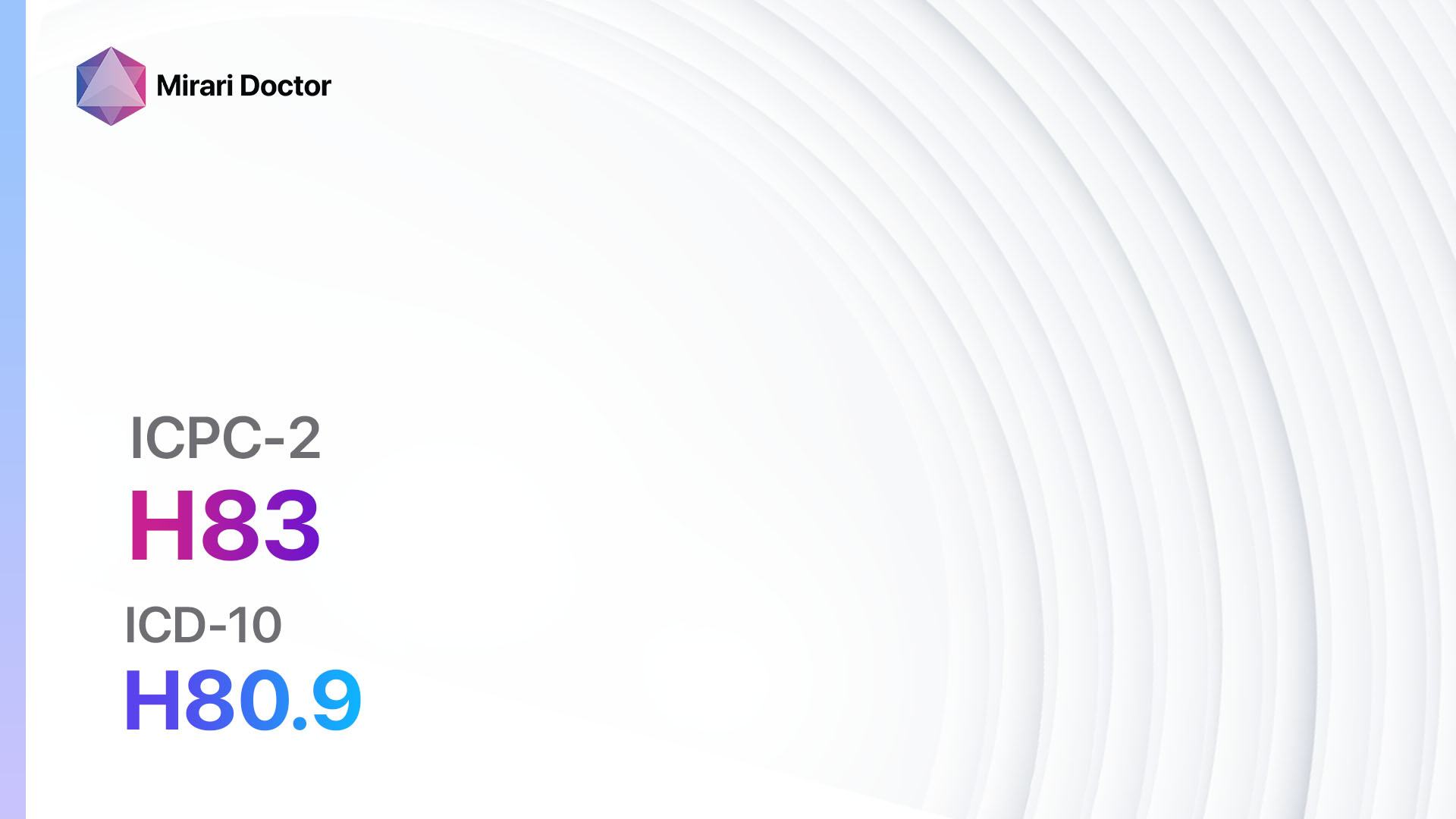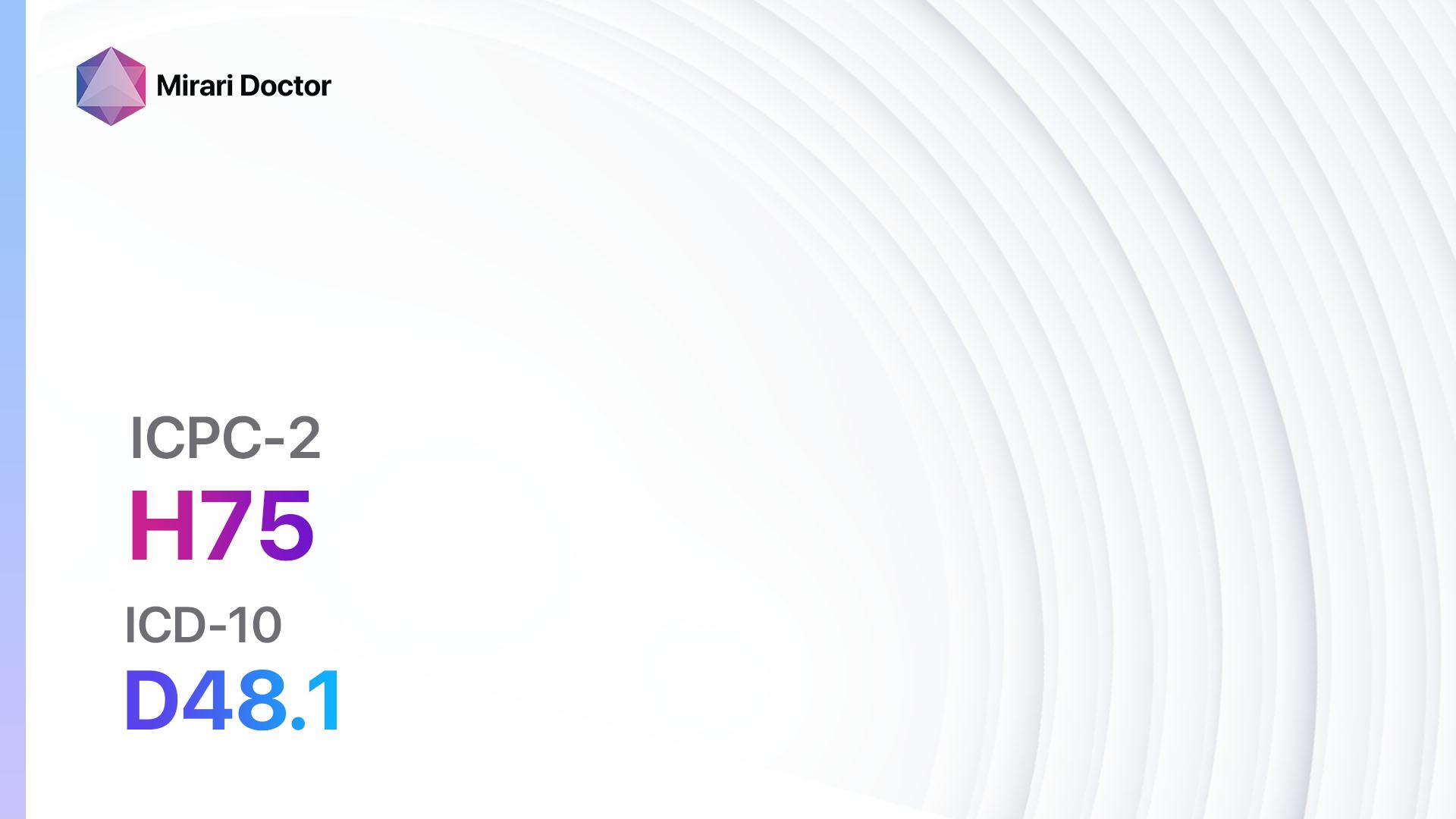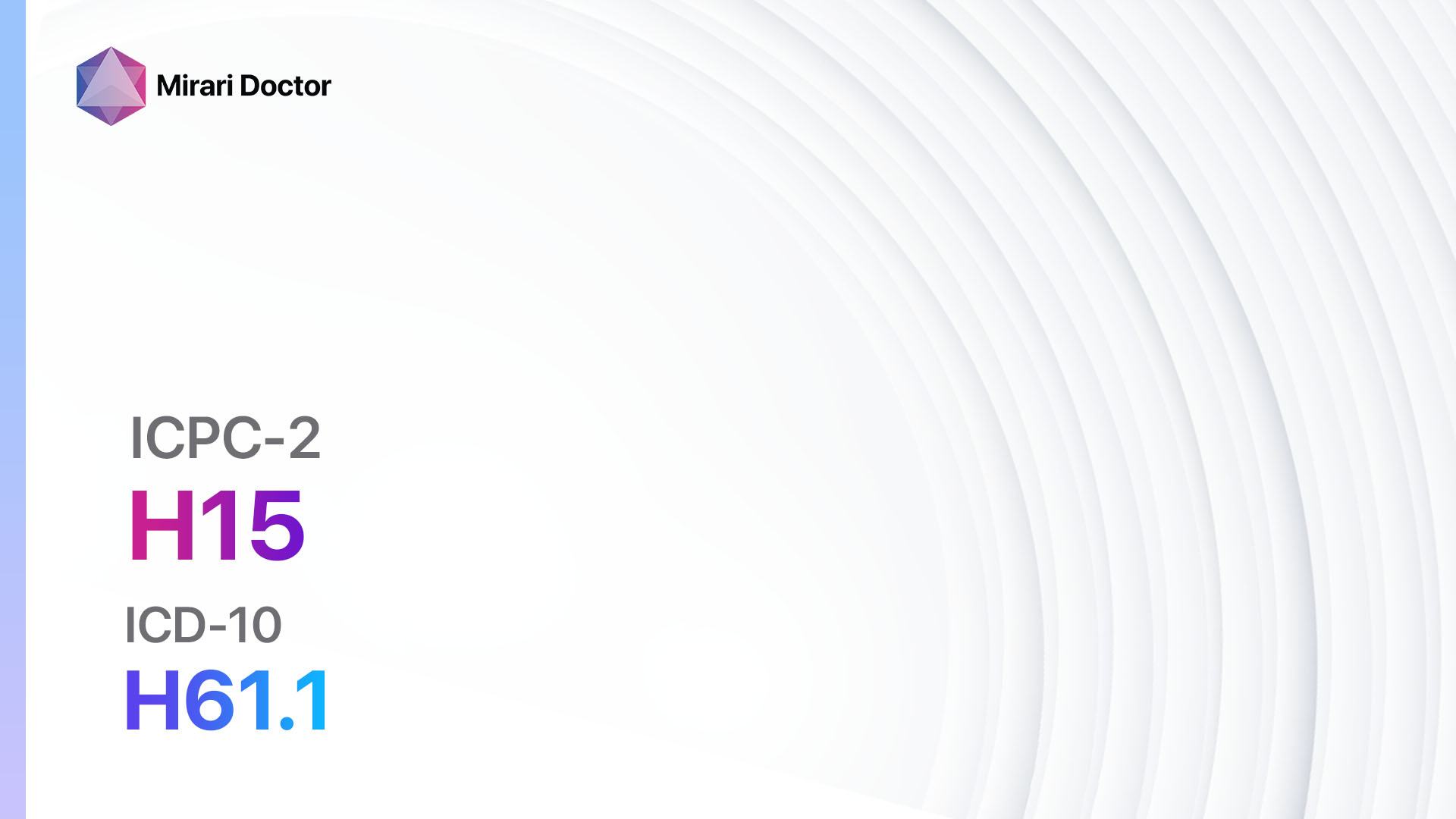
Introduction
Hearing complaints refer to any issues or concerns related to a person’s ability to hear. These complaints can range from mild hearing loss to complete deafness and can significantly impact a person’s quality of life[1]. The aim of this guide is to provide healthcare professionals with a comprehensive approach to diagnosing and managing hearing complaints.
Codes
Symptoms
- Difficulty hearing conversations or sounds in noisy environments[4]
- Ringing or buzzing sensation in the ears (tinnitus)[5]
- Feeling of fullness or pressure in the ears[6]
- Ear pain or discomfort[7]
- Dizziness or balance problems[8]
Causes
- Age-related hearing loss (presbycusis)[9]
- Noise-induced hearing loss[10]
- Earwax blockage
- Ear infections
- Ototoxic medications
- Meniere’s disease
- Head or ear trauma
- Genetic factors
Diagnostic Steps
Medical History
- Gather information about the patient’s hearing complaints, including the duration, severity, and progression of symptoms.
- Ask about any previous ear infections, trauma, or exposure to loud noises.
- Inquire about any medications the patient is currently taking, as some can cause hearing loss.
- Assess the patient’s medical history for conditions that may contribute to hearing loss, such as diabetes or cardiovascular disease.
Physical Examination
- Inspect the external ear for any abnormalities, such as earwax blockage or signs of infection.
- Perform a pneumatic otoscopy to assess the mobility of the eardrum.
- Use a tuning fork to assess hearing acuity and differentiate between conductive and sensorineural hearing loss.
- Evaluate the patient’s balance and coordination to rule out any vestibular disorders.
Laboratory Tests
- Audiometry: Conduct a pure-tone audiometry test to assess the patient’s hearing thresholds at different frequencies.
- Tympanometry: Measure the movement of the eardrum to evaluate middle ear function.
- Blood tests: Check for any underlying medical conditions that may contribute to hearing loss, such as diabetes or autoimmune disorders.
- Genetic testing: Consider genetic testing for patients with a family history of hearing loss or suspected genetic causes.
Diagnostic Imaging
- CT scan or MRI: Use imaging modalities to assess the structures of the inner ear and rule out any structural abnormalities or tumors.
Other Tests
- Otoacoustic emissions (OAE) test: Measure the sounds produced by the inner ear in response to a stimulus to assess cochlear function.
- Auditory brainstem response (ABR) test: Measure the electrical activity of the auditory nerve and brainstem in response to sound stimuli to evaluate the integrity of the auditory pathway.
Follow-up and Patient Education
- Schedule a follow-up appointment to review the test results and discuss treatment options.
- Provide patient education on hearing conservation, including the use of ear protection in noisy environments and the importance of regular hearing screenings.
Possible Interventions
Traditional Interventions
Medications:
Top 5 drugs for Hearing Complaints:
- Antibiotics (e.g., Amoxicillin, Ciprofloxacin):
- Cost: Generic versions can be $3-$50/month.
- Contraindications: Allergy to antibiotics, history of tendonitis or tendon rupture.
- Side effects: Upset stomach, diarrhea, rash.
- Severe side effects: Severe allergic reactions, Clostridium difficile infection.
- Drug interactions: Warfarin, antacids containing aluminum or magnesium.
- Warning: Finish the full course of antibiotics as prescribed.
- Corticosteroids (e.g., Prednisone, Dexamethasone):
- Cost: Generic versions can be $4-$50/month.
- Contraindications: Active infections, systemic fungal infections.
- Side effects: Increased appetite, weight gain, mood changes.
- Severe side effects: Increased risk of infections, osteoporosis.
- Drug interactions: Nonsteroidal anti-inflammatory drugs (NSAIDs), anticoagulants.
- Warning: Taper the dose gradually to avoid adrenal insufficiency.
- Antihistamines (e.g., Loratadine, Diphenhydramine):
- Cost: Generic versions can be $4-$20/month.
- Contraindications: Narrow-angle glaucoma, urinary retention.
- Side effects: Drowsiness, dry mouth, blurred vision.
- Severe side effects: Severe allergic reactions, hallucinations.
- Drug interactions: Sedatives, alcohol.
- Warning: Avoid driving or operating machinery while taking sedating antihistamines.
- Diuretics (e.g., Furosemide, Hydrochlorothiazide):
- Cost: Generic versions can be $4-$20/month.
- Contraindications: Anuria, hepatic coma.
- Side effects: Increased urination, electrolyte imbalances.
- Severe side effects: Dehydration, low blood pressure.
- Drug interactions: Nonsteroidal anti-inflammatory drugs (NSAIDs), lithium.
- Warning: Monitor electrolyte levels regularly.
- Antidepressants (e.g., Sertraline, Amitriptyline):
- Cost: Generic versions can be $4-$50/month.
- Contraindications: Monoamine oxidase inhibitors (MAOIs), recent myocardial infarction.
- Side effects: Nausea, drowsiness, sexual dysfunction.
- Severe side effects: Suicidal thoughts, serotonin syndrome.
- Drug interactions: MAOIs, other serotonergic drugs.
- Warning: Monitor for signs of worsening depression or suicidal ideation.
Alternative Drugs:
- Ginkgo biloba: An herbal supplement that may improve blood flow to the inner ear. Cost: $10-$30/month.
- Vitamin B12: May help improve nerve function and reduce the risk of hearing loss. Cost: $5-$15/month.
- Magnesium: Some studies suggest that magnesium supplementation may help protect against noise-induced hearing loss. Cost: $5-$20/month.
- Coenzyme Q10: May have antioxidant properties that can protect against age-related hearing loss. Cost: $10-$30/month.
- Acetyl-L-carnitine: Some evidence suggests that this supplement may improve hearing function in certain individuals. Cost: $10-$30/month.
Surgical Procedures:
- Cochlear implant: A surgically implanted device that bypasses damaged parts of the inner ear and stimulates the auditory nerve. Cost: $50,000-$100,000.
- Tympanoplasty: A surgical procedure to repair a perforated eardrum or reconstruct the middle ear. Cost: $5,000-$10,000.
- Stapedectomy: A surgical procedure to replace the stapes bone in the middle ear to improve hearing in cases of otosclerosis. Cost: $10,000-$20,000.
Alternative Interventions
- Acupuncture: May help improve blood flow and reduce tinnitus. Cost: $60-$120 per session.
- Herbal supplements: Some herbs, such as ginkgo biloba and ginger, may have potential benefits for improving hearing. Cost: Varies depending on the specific supplement.
- Sound therapy: Using specific frequencies or white noise to mask tinnitus and improve overall hearing. Cost: $100-$300 for sound therapy devices.
- Hypnotherapy: May help reduce stress and anxiety associated with hearing complaints. Cost: $75-$150 per session.
- Mindfulness-based stress reduction: Techniques to reduce stress and improve overall well-being. Cost: $200-$500 for an 8-week program.
Lifestyle Interventions
- Hearing aids: Devices that amplify sound and improve hearing. Cost: $1,000-$6,000 per ear.
- Assistive listening devices: Devices that help improve hearing in specific situations, such as telecoil systems or FM systems. Cost: Varies depending on the specific device.
- Communication strategies: Teach patients effective communication techniques, such as lip-reading or using visual cues.
- Avoiding loud noises: Educate patients about the importance of protecting their ears from loud noises to prevent further hearing loss. Cost: Varies depending on the specific ear protection device.
It is important to note that the cost ranges provided are approximate and may vary depending on the location and availability of the interventions.
Mirari Cold Plasma Alternative Intervention
Understanding Mirari Cold Plasma
- Safe and Non-Invasive Treatment: Mirari Cold Plasma is a safe and non-invasive treatment option for various skin conditions. It does not require incisions, minimizing the risk of scarring, bleeding, or tissue damage.
- Efficient Extraction of Foreign Bodies: Mirari Cold Plasma facilitates the removal of foreign bodies from the skin by degrading and dissociating organic matter, allowing easier access and extraction.
- Pain Reduction and Comfort: Mirari Cold Plasma has a local analgesic effect, providing pain relief during the treatment, making it more comfortable for the patient.
- Reduced Risk of Infection: Mirari Cold Plasma has antimicrobial properties, effectively killing bacteria and reducing the risk of infection.
- Accelerated Healing and Minimal Scarring: Mirari Cold Plasma stimulates wound healing and tissue regeneration, reducing healing time and minimizing the formation of scars.
Mirari Cold Plasma Prescription
Video instructions for using Mirari Cold Plasma Device – H02 Hearing complaint (ICD-10:H91.9)
| Mild | Moderate | Severe |
| Mode setting: 1 (Infection) Location: 0 (Localized) Morning: 15 minutes, Evening: 15 minutes | Mode setting: 1 (Infection) Location: 0 (Localized) Morning: 30 minutes, Lunch: 30 minutes, Evening: 30 minutes | Mode setting: 1 (Infection) Location: 0 (Localized) Morning: 30 minutes, Lunch: 30 minutes, Evening: 30 minutes |
| Mode setting: 2 (Wound Healing) Location: 0 (Localized) Morning: 15 minutes, Evening: 15 minutes | Mode setting: 2 (Wound Healing) Location: 0 (Localized) Morning: 30 minutes, Lunch: 30 minutes, Evening: 30 minutes | Mode setting: 2 (Wound Healing) Location: 0 (Localized) Morning: 30 minutes, Lunch: 30 minutes, Evening: 30 minutes |
| Mode setting: 3 (Antiviral Therapy) Location: 0 (Localized) Morning: 15 minutes, Evening: 15 minutes | Mode setting: 3 (Antiviral Therapy) Location: 0 (Localized) Morning: 30 minutes, Lunch: 30 minutes, Evening: 30 minutes | Mode setting: 3 (Antiviral Therapy) Location: 0 (Localized) Morning: 30 minutes, Lunch: 30 minutes, Evening: 30 minutes |
| Total Morning: 45 minutes approx. $7.50 USD, Evening: 45 minutes approx. $7.50 USD | Total Morning: 90 minutes approx. $15 USD, Lunch: 90 minutes approx. $15 USD, Evening: 90 minutes approx. $15 USD, | Total Morning: 90 minutes approx. $15 USD, Lunch: 90 minutes approx. $15 USD, Evening: 90 minutes approx. $15 USD, |
| Usual treatment for 7-60 days approx. $105 USD – $900 USD | Usual treatment for 6-8 weeks approx. $1,890USD – $2,520 USD | Usual treatment for 3-6 months approx. $4,050 USD – $8,100 USD |
 |
|
Use the Mirari Cold Plasma device to treat Hearing complaint effectively.
WARNING: MIRARI COLD PLASMA IS DESIGNED FOR THE HUMAN BODY WITHOUT ANY ARTIFICIAL OR THIRD PARTY PRODUCTS. USE OF OTHER PRODUCTS IN COMBINATION WITH MIRARI COLD PLASMA MAY CAUSE UNPREDICTABLE EFFECTS, HARM OR INJURY. PLEASE CONSULT A MEDICAL PROFESSIONAL BEFORE COMBINING ANY OTHER PRODUCTS WITH USE OF MIRARI.
Step 1: Cleanse the Skin
- Start by cleaning the affected area of the skin with a gentle cleanser or mild soap and water. Gently pat the area dry with a clean towel.
Step 2: Prepare the Mirari Cold Plasma device
- Ensure that the Mirari Cold Plasma device is fully charged or has fresh batteries as per the manufacturer’s instructions. Make sure the device is clean and in good working condition.
- Switch on the Mirari device using the power button or by following the specific instructions provided with the device.
- Some Mirari devices may have adjustable settings for intensity or treatment duration. Follow the manufacturer’s instructions to select the appropriate settings based on your needs and the recommended guidelines.
Step 3: Apply the Device
- Place the Mirari device in direct contact with the affected area of the skin. Gently glide or hold the device over the skin surface, ensuring even coverage of the area experiencing.
- Slowly move the Mirari device in a circular motion or follow a specific pattern as indicated in the user manual. This helps ensure thorough treatment coverage.
Step 4: Monitor and Assess:
- Keep track of your progress and evaluate the effectiveness of the Mirari device in managing your Hearing complaint. If you have any concerns or notice any adverse reactions, consult with your health care professional.
Note
This guide is for informational purposes only and should not replace the advice of a medical professional. Always consult with your healthcare provider or a qualified medical professional for personal advice, diagnosis, or treatment. Do not solely rely on the information presented here for decisions about your health. Use of this information is at your own risk. The authors of this guide, nor any associated entities or platforms, are not responsible for any potential adverse effects or outcomes based on the content.
Mirari Cold Plasma System Disclaimer
- Purpose: The Mirari Cold Plasma System is a Class 2 medical device designed for use by trained healthcare professionals. It is registered for use in Thailand and Vietnam. It is not intended for use outside of these locations.
- Informational Use: The content and information provided with the device are for educational and informational purposes only. They are not a substitute for professional medical advice or care.
- Variable Outcomes: While the device is approved for specific uses, individual outcomes can differ. We do not assert or guarantee specific medical outcomes.
- Consultation: Prior to utilizing the device or making decisions based on its content, it is essential to consult with a Certified Mirari Tele-Therapist and your medical healthcare provider regarding specific protocols.
- Liability: By using this device, users are acknowledging and accepting all potential risks. Neither the manufacturer nor the distributor will be held accountable for any adverse reactions, injuries, or damages stemming from its use.
- Geographical Availability: This device has received approval for designated purposes by the Thai and Vietnam FDA. As of now, outside of Thailand and Vietnam, the Mirari Cold Plasma System is not available for purchase or use.
References
- Cunningham, L. L., & Tucci, D. L. (2017). Hearing Loss in Adults. New England Journal of Medicine, 377(25), 2465-2473.//doi.org/10.1056/nejmra1616601
- WONCA International Classification Committee. (1998). ICPC-2: International Classification of Primary Care. Oxford University Press, USA.
- World Health Organization. (2019). International statistical classification of diseases and related health problems (11th ed.).//icd.who.int/
- Graydon, K., Waterworth, C., Miller, H., & Gunasekera, H. (2019). Global burden of hearing impairment and ear disease. The Journal of Laryngology & Otology, 133(1), 18-25.//doi.org/10.1017/s0022215118001275
- Baguley, D., McFerran, D., & Hall, D. (2013). Tinnitus. The Lancet, 382(9904), 1600-1607.//doi.org/10.1016/s0140-6736(13)60142-7
- Stachler, R. J., Chandrasekhar, S. S., Archer, S. M., Rosenfeld, R. M., Schwartz, S. R., Barrs, D. M., Brown, S. R., Fife, T. D., Ford, P., Ganiats, T. G., Hollingsworth, D. B., Lewandowski, C. A., Montano, J. J., Saunders, J. E., Tucci, D. L., Valente, M., Warren, B. E., Yaremchuk, K. L., & Robertson, P. J. (2012). Clinical Practice Guideline: Sudden Hearing Loss. Otolaryngology–Head and Neck Surgery, 146(3_suppl), S1-S35.//doi.org/10.1177/0194599812436449
- Lieberthal, A. S., Carroll, A. E., Chonmaitree, T., Ganiats, T. G., Hoberman, A., Jackson, M. A., Joffe, M. D., Miller, D. T., Rosenfeld, R. M., Sevilla, X. D., Schwartz, R. H., Thomas, P. A., & Tunkel, D. E. (2013). The Diagnosis and Management of Acute Otitis Media. Pediatrics, 131(3), e964-e999.//doi.org/10.1542/peds.2012-3488
- Jahn, A. F. (2011). Approach to the Patient with Dizziness. Medical Clinics of North America, 95(5), 1031-1042.//doi.org/10.1016/j.mcna.2011.05.002
- Gates, G. A., & Mills, J. H. (2005). Presbycusis. The Lancet, 366(9491), 1111-1120.//doi.org/10.1016/s0140-6736(05)67423-5
- Basner, M., Babisch, W., Davis, A., Brink, M., Clark, C., Janssen, S., & Stansfeld, S. (2014). Auditory and non-auditory effects of noise on health. The Lancet, 383(9925), 1325-1332.//doi.org/10.1016/s0140-6736(13)61613-x
Related articles
Made in USA




























